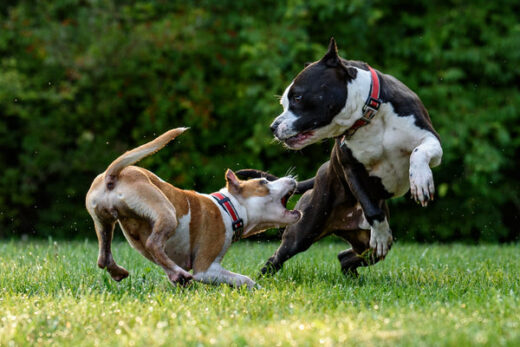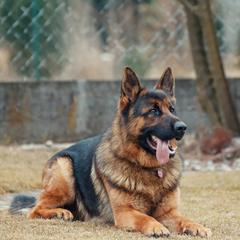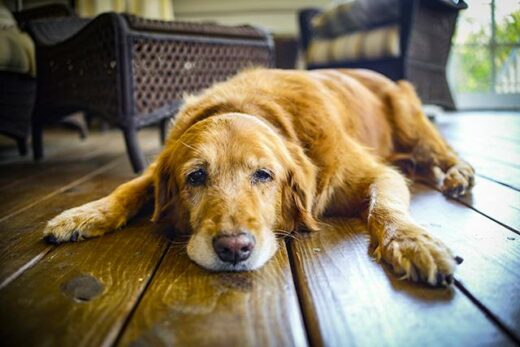What Is An English Bulldog?
English Bulldogs are up there with Dalmatians and Golden Retrievers for being one of the most easily recognizable dogs around. They have a distinctive look to them, with their most prominent characteristic being their short snouts and chubby faces.
English Bulldogs are short – only about a foot tall – and extremely stout. They’re tough little guys and were originally bred to fight bulls. These days, they’ve lost all of their fight and have turned into super lovable dogs.
They’re very friendly, don’t require much exercise, and have a lot to offer for new families. However, they do have a tendency to develop health issues later in life and require some extra attention in certain areas.
The History Of The English Bulldog
As the name suggests, the English Bulldog was originally bred in England for a sport known as bullbaiting. In this medieval sport, Bulldogs would attack and taunt tethered bulls, eventually pinning the bull down to be executed.
Bullbaiting was outlawed in 1865, however, which seemed like the end for the little fighting machines. They were notoriously aggressive, and only bred for a singular purpose – so why keep them as pets?
Well, over time, passionate breeders were able to turn these little fighters into the chubby cuddlers we know them as today. They’re now one of the more revered breeds of dogs, and often can be found on display at dog shows around the world.
Appearance And Personality Of English Bulldogs
English Bulldogs have a very distinctive look. Their heads are large and round, with a flat muzzle. They have large, broadly set jaws, and have droopy jowls and skin all around their face. They have a short and thick body, with broad shoulders and stocky legs. They come in a variety of color patterns, though the most well known is white and brown.
Despite their fierce appearance and history, they are some of the gentlest dogs around. The English Bulldog personality portrays to be very sociable, especially with people, so you don’t have to worry about introducing them to new animals and friends.
That said, they are still loyal and brave, making them great watchdogs. They don’t scare easy and will do more than just bark if they sense an intruder.
The Different Types Of English Bulldogs
Blue English Bulldog
The Blue English Bulldog is a variation of the traditional English Bulldog with two major differences. The most obvious is its coat color. Blue English Bulldogs have a grey and white coat mix, as opposed to a brown and white coat.
The second difference, and the characteristic most people seeking out Blue English Bulldogs are interested in them, is their blue eyes. Blue eyes are rare on just about any dog, but especially when it comes to English Bulldogs, who traditionally have dark brown and black eyes.
While this may not seem like a big deal to most, this one change can be very difficult to breed for. And as a result, these dogs are much, much more expensive than traditional English Bulldogs.
British bulldog
British Bulldogs are the standard English Bulldogs that you think of or see the majority of the time. They have a brown and white coat with dark brown eyes and are the least expensive of the English Bulldog variations.
Mini bulldog
The Mini Bulldog – sometimes called the Toy Bulldog – is a variation of English Bulldogs that is the same in just about every way, except that they are much smaller. They also tend to have less wrinkly and chubby physiques, which may appeal to certain owners.
Unlike other toy breeds, though, the Mini Bulldog is not as small as you might expect. It’s somewhere in between the standard English Bulldog and a Chihuahua. So think of them as a slightly smaller Bulldog rather than a tiny one.
Mini Bulldogs have been bred since the 1800s, though they didn’t really find their footing until the 1970s and 1980s. They were created using DNA from Pugs and English Bulldogs in an attempt to reduce the number of health issues that English Bulldogs experience. While the breed became popular, the reduction in health issues has mostly been negligible.
Care And Maintenance Of English Bulldogs
Nutrition
Fortunately, English Bulldogs don’t have any particularly special dietary requirements. They can eat any dog food and be ok, though high-quality dog food is generally recommended. Just make sure that whatever dog food you are feeding them is relevant to their needs (puppy, adult, senior, indoor, outdoor, etc.)
The one thing to keep in mind about English Bulldogs when it comes to their diet is that they can be particularly prone to becoming overweight. This is because they don’t exercise as much as other dogs.
So, make sure that you aren’t ever overfeeding your English Bulldog. Treats are ok to give them during training, although it’s easy to overfeed them on treats if you aren’t careful.





